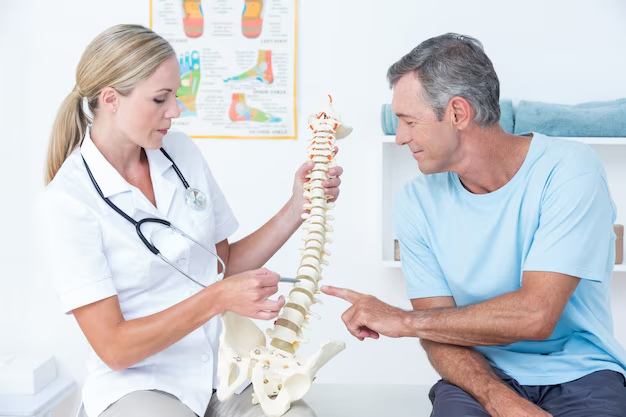Navigating the Complexities of Scoliosis: Understanding the Basics and Beyond
When someone mentions scoliosis, it might ring a distant bell, or perhaps spark vivid memories if you've had personal experiences with it. Yet, for many, the term requires a bit of spelling help and a deep understanding of what it encompasses. So, how do you spell scoliosis? Beyond the alphabet, it represents a medical condition with layers worth unraveling.
Understanding Scoliosis
What is Scoliosis?
Scoliosis is a spinal condition characterized by an abnormal lateral curvature of the spine. Often appearing as an "S" or "C" shape, scoliosis can vary in severity. For some, it’s a minor condition that doesn’t require treatment. For others, it may lead to discomfort and require medical intervention.
Types of Scoliosis
To better grasp scoliosis, it's vital to explore its different types:
- Idiopathic Scoliosis: The most common form, often diagnosed during adolescence. The term "idiopathic" means the cause is unknown.
- Congenital Scoliosis: Present at birth, resulting from malformations in the spine.
- Neuromuscular Scoliosis: Often associated with neurological conditions like cerebral palsy or muscular dystrophy.
- Degenerative Scoliosis: Typically occurs in older adults due to aging effects on the spine.
Signs and Symptoms of Scoliosis
Physical Indicators
Recognizing scoliosis early can help in managing its progression. Below are some physical symptoms to watch for:
- Uneven shoulders or hips
- Prominent shoulder blade
- Asymmetrical waist
- Back pain or discomfort
Impact on Daily Life
Scoliosis can affect more than just physical appearance. It may influence day-to-day activities, leading to:
- Limited mobility
- Difficulty breathing (in severe cases)
- Reduced quality of life due to chronic pain
Seeking Diagnosis
When to See a Doctor?
If you or a loved one notices any of the physical indicators, consulting a healthcare professional is advisable. Early diagnosis often results in better management strategies.
Diagnostic Tools
Medical practitioners use various methods to diagnose scoliosis:
- Physical Examination: Checking posture, and considering the range of mobility.
- Imaging Tests: X-rays are crucial for viewing the curvature and determining the degree of scoliosis.
Exploring Non-Surgical Treatments
Observation and Monitoring
For mild cases, scoliosis may just require regular monitoring to ensure it doesn’t progress. This may include periodic X-rays and physical evaluations.
Bracing
Bracing is commonly used among teenagers to prevent further curvature, particularly when they’re still growing. It's most effective when worn as prescribed by a healthcare provider.
Physical Therapy
Physical therapy can aid in strengthening the muscles and maintaining flexibility. Therapists often design specific exercises tailored to the individual’s needs.
When Surgery Becomes an Option
Considering Surgical Intervention
In severe cases, surgery might be necessary to correct the curvature and alleviate symptoms. Factors influencing this decision include:
- Degree of curvature
- Pain severity
- Impact on lung and heart function
Types of Surgical Procedures
- Spinal Fusion: The most common scoliosis surgery, it involves fusing the vertebrae to correct curvature.
- Vertebral Body Tethering (VBT): A less invasive option that uses a flexible cord to straighten the spine.
Supporting Someone with Scoliosis
Emotional Support
Living with scoliosis can be challenging emotionally as well as physically. Providing emotional support to those affected is crucial. Encouragement and understanding go a long way.
Lifestyle Adjustments
Making lifestyle adjustments can significantly enhance comfort for those living with scoliosis:
- Ergonomic furniture to support posture
- Regular exercise to strengthen the back
- Mindfulness practices to manage stress
Myths and Misconceptions
Debunking Common Myths
Understanding scoliosis requires debunking common myths:
Myth: Only teenagers get scoliosis.
Fact: While prevalent among teenagers, scoliosis affects people of all ages.Myth: Heavy backpacks cause scoliosis.
Fact: Backpacks are not a cause, though they may aggravate symptoms.Myth: Surgery is the only effective treatment.
Fact: Many patients manage scoliosis successfully with non-surgical methods.
Conclusion: Embracing Awareness and Understanding
Scoliosis is more than just a spinal abnormality. It’s a condition that affects physical health, emotional well-being, and overall lifestyle. Spelling scoliosis might be the first step, but understanding its complexities opens doors to empathy, support, and informed decisions. Whether managing scoliosis oneself or supporting someone who does, knowledge is empowering.
Quick Tips and Takeaways 📌
- Spelling Reminder: The correct spelling is "Scoliosis." 📝
- Types of Scoliosis: Idiopathic, congenital, neuromuscular, degenerative. 📚
- Signs to Watch: Uneven shoulders, asymmetrical waist, back pain. 🔍
- Treatment Options:
- Non-surgical: Observation, Bracing, Physical therapy. 💪
- Surgical: Spinal Fusion, VBT. 🏥
- Emotional Well-being: Provide understanding and encouragement. 🤗
- Lifestyle Choices: Ergonomic support, Regular exercise, Mindfulness. 🧘♀️
- Bust Myths: All ages affected, and surgery isn't the only solution. 🚫
By learning and sharing, we contribute to a supportive community that understands scoliosis beyond its medical definition.
